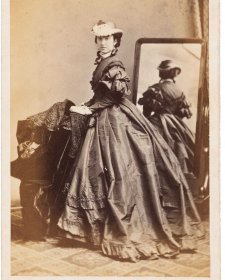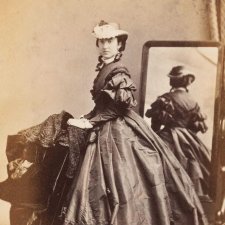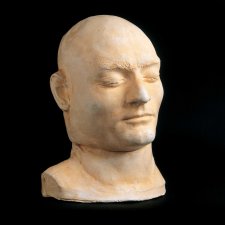Lucy Escott (1828–1895), soprano, spent several years in Australia during the 1860s as a member of William Saurin Lyster's touring opera company. Born Lucy Evans Grant in Springfield, Massachusetts, Escott is said to have shown promise from an early age, such that she was sent abroad for tuition with an Italian professore. ‘After acquiring experience and confidence in the various opera houses of Italy’, Escott went to London and thence on to engagements in ‘the principal cities of the United Kingdom.’ Following an American tour she and the Vermont-born tenor Henry Squires were signed by Lyster for a jaunt around the Australian colonies which kicked off in Melbourne in March 1861 and ended up lasting eight years. Lyster's company became a favourite with audiences, the singers performing six nights a week in a repertoire of operas in Italian, German and English. Escott was the company's prima donna and headline act, touted as 'a vocalist and actress of the very first order of merit, possessing a voice and a power of execution equal to that of the most celebrated artistes.’ She and Squires married after leaving Australia and retired to an abode in Paris, where Escott is said to have ‘devoted herself to the study of painting and sculpture with as much energy as she had previously infused into her operatic work.’ She died in Paris following a bout of pneumonia and ‘by her own desire’ was cremated at Pére Lachaise.
Edwin Dalton (active 1853–1865), artist and photographer, arrived in Victoria in the early 1850s having exhibited on occasion with the Royal Academy since 1818. In London, he had trained and worked with painter Sir William Ross, whose artist–sister Magdalena Dalton married. In Melbourne, he established himself as a portrait painter, exhibiting with the Victoria Fine Arts’ Society in 1853 and in the Melbourne Exhibition in 1854. He added photography to his repertoire after moving to Sydney where, in 1858, he opened his ‘Royal Photographic Establishment’ at 400 George Street. By 1861 he was offering ‘photographic portraiture in all the modern branches – crayon, ivory, glass and paper – artistically coloured by E. Dalton, formerly painter and instructor to the Queen’. Dalton’s cartes de visite of Henry Squires and Lucy Escott were among the many portraits of local and international personages advertised as being available from Sydney stationer J.R. Clarke in December 1862 for two shillings each (or 21 shillings per dozen). This delicately hand-coloured carte of Escott and the pendant carte of Henry Squires were originally contained in Squires’ personal carte de visite album.
Purchased 2009



On one level The Companion talks about the most famous and frontline Australians, but on another it tells us about ourselves.



Drawn from the NPG’s burgeoning collection of cartes de visite, Carte-o-mania! celebrates the wit, style and substance of the pocket-sized portraits that were taken and collected like crazy in post-goldrush Australia.



Death masks, post-mortem drawings and other spooky and disquieting portraits... Come and see how portraits of infamous Australians were used in the 19th century.